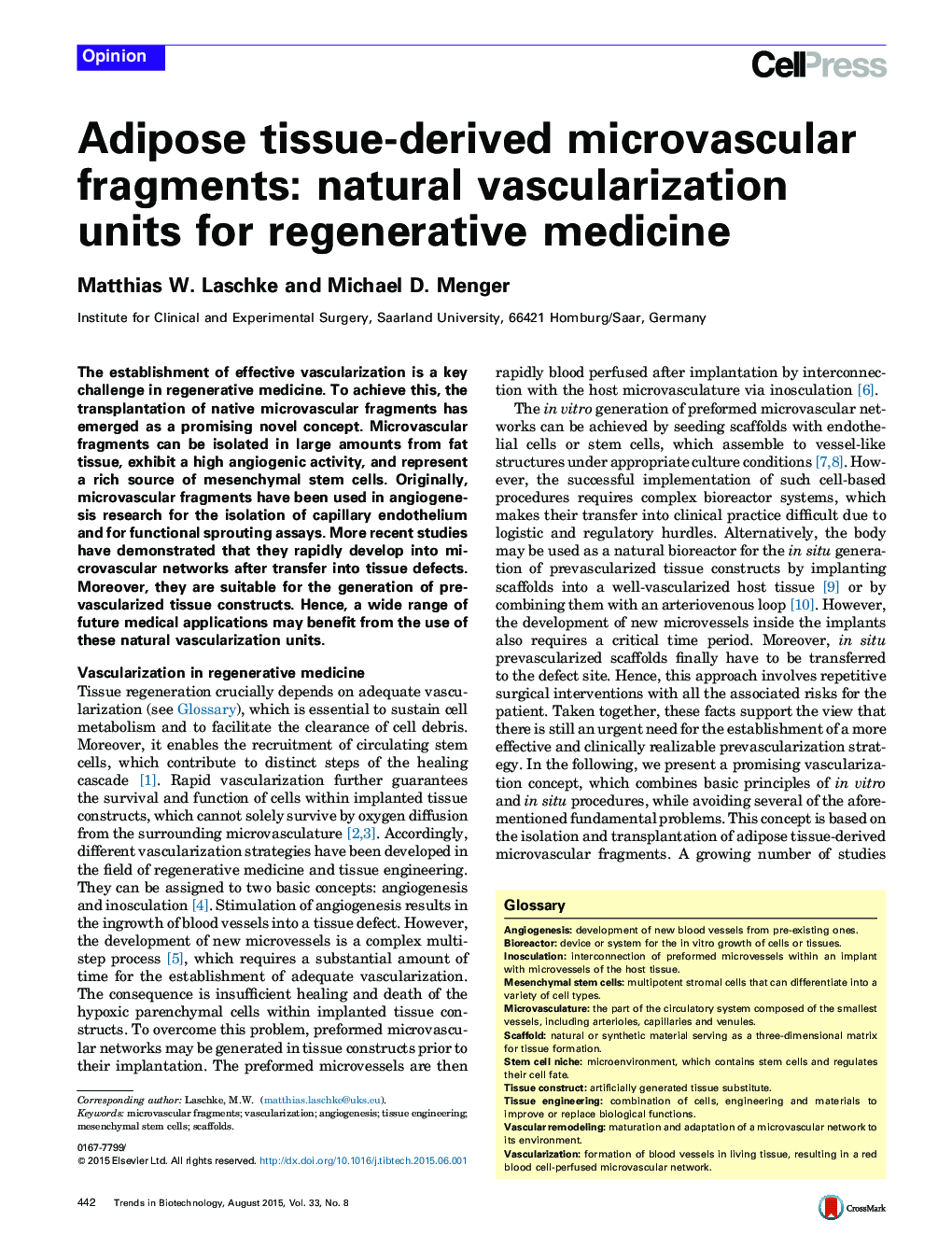| Article ID | Journal | Published Year | Pages | File Type |
|---|---|---|---|---|
| 36917 | Trends in Biotechnology | 2015 | 7 Pages |
•Tissue regeneration crucially depends on an adequate vascularization.•Microvascular fragments can be isolated in large amounts from fat tissue.•Microvascular fragments are a rich source of mesenchymal stem cells.•Transplanted microvascular fragments rapidly develop into blood-perfused networks.
The establishment of effective vascularization is a key challenge in regenerative medicine. To achieve this, the transplantation of native microvascular fragments has emerged as a promising novel concept. Microvascular fragments can be isolated in large amounts from fat tissue, exhibit a high angiogenic activity, and represent a rich source of mesenchymal stem cells. Originally, microvascular fragments have been used in angiogenesis research for the isolation of capillary endothelium and for functional sprouting assays. More recent studies have demonstrated that they rapidly develop into microvascular networks after transfer into tissue defects. Moreover, they are suitable for the generation of prevascularized tissue constructs. Hence, a wide range of future medical applications may benefit from the use of these natural vascularization units.
